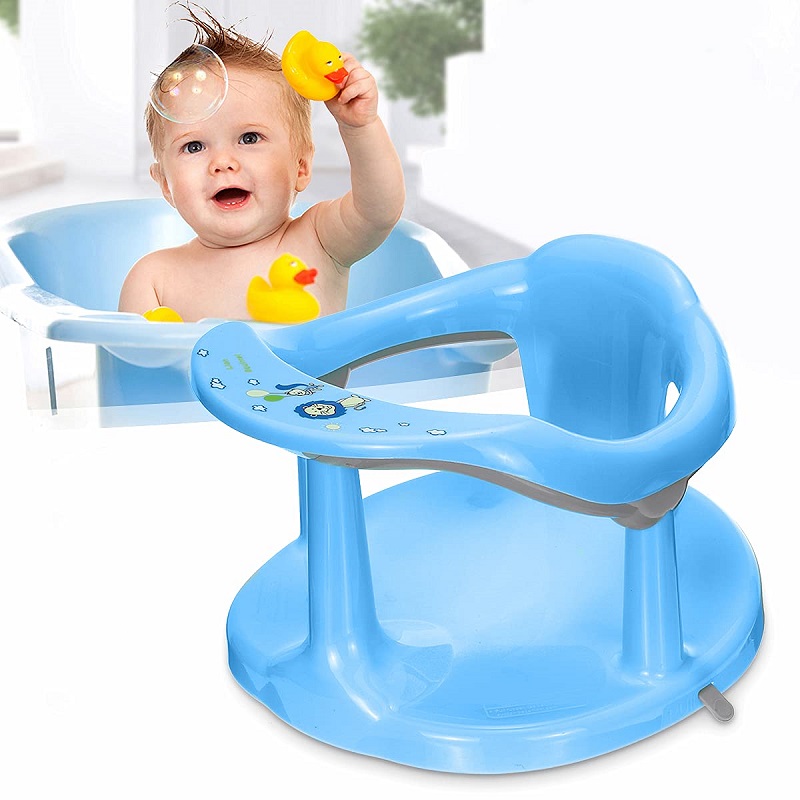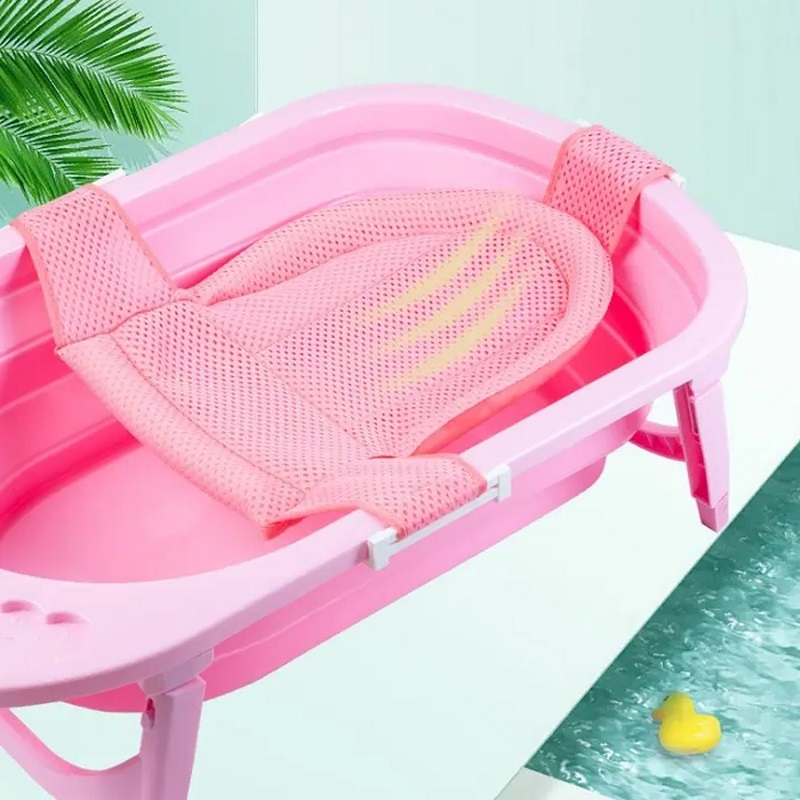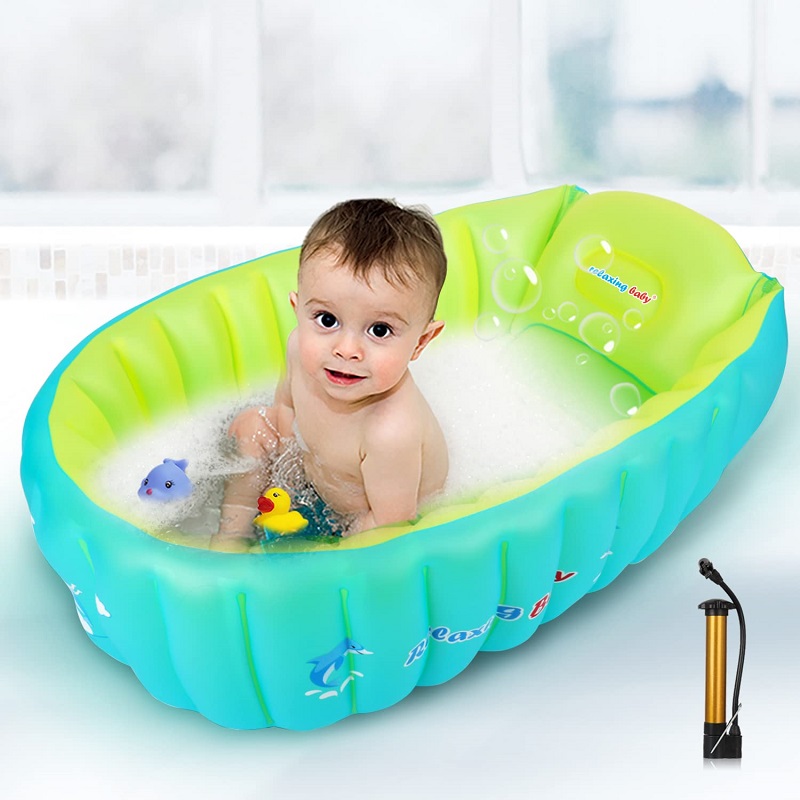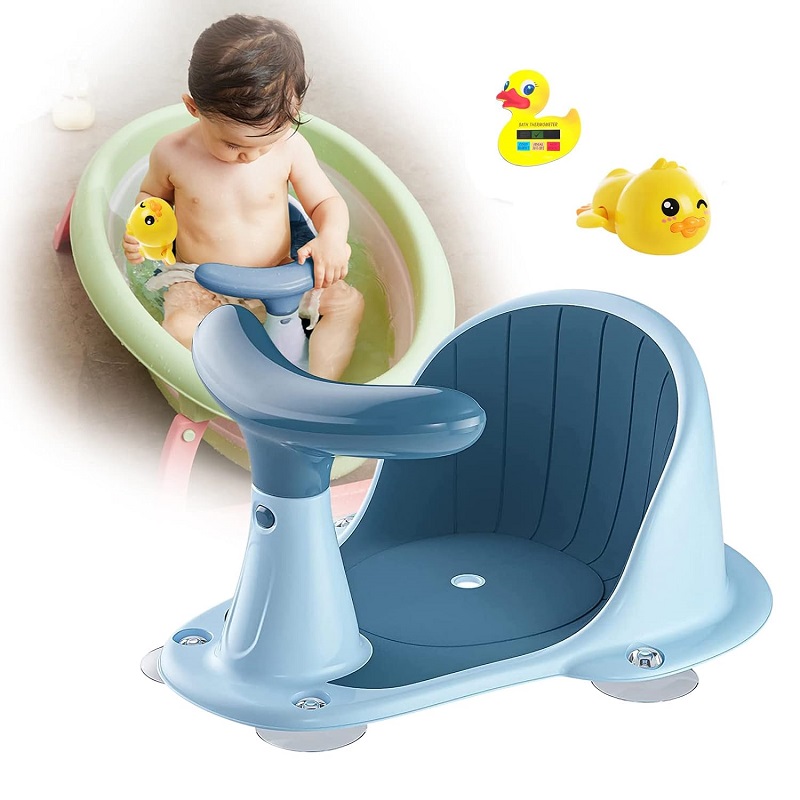When it comes to bathing your little one, selecting the right baby bath tub seat is crucial for both safety and comfort. A bath tub seat can provide the necessary support and stability to ensure that bath time is enjoyable for both parents and babies. In this comprehensive guide, we will explore various factors to consider when choosing a baby bath tub seat, including safety features, design options, and practical tips for use.
Understanding the Importance of Safety
Why Safety Should Be Your Top Priority
Safety is the foremost consideration when selecting a baby bath tub seat. Infants are naturally wiggly and curious, making it essential to choose a product that minimizes the risk of slipping or tipping over during bath time. Look for seats with a sturdy base and non-slip materials that can grip the tub surface securely. Additionally, seats should have a backrest and side supports to provide maximum stability. Ensure that the seat is designed specifically for the age and weight of your baby to avoid accidents.
Recognizing Safety Certifications
Before making a purchase, check for safety certifications and standards. Many reputable brands adhere to safety regulations set by organizations such as the Consumer Product Safety Commission (CPSC). Look for products that have been tested for stability, durability, and non-toxicity. These certifications provide peace of mind, ensuring that you are investing in a reliable product that prioritizes your baby’s safety.

Evaluating Comfort Features
The Role of Comfort in Bath Time
While safety is critical, comfort is equally important. A well-designed baby bath tub seat should offer a cozy space where your little one can relax during bath time. Look for padded seats that provide extra cushioning for your baby’s delicate skin. The materials used should be soft, hypoallergenic, and easy to clean. Consider options with reclining features that allow you to adjust the seat’s angle, giving your baby a more comfortable position while bathing.
Temperature Control Features
Another essential aspect of comfort is temperature control. Some bath tub seats come equipped with temperature sensors that change color to indicate the water’s warmth. This feature is invaluable for preventing burns and ensuring your baby is comfortable throughout the bath. Make sure to check the water temperature before placing your baby in the tub, even if the seat has this feature.
Exploring Design Options
Types of Baby Bath Tub Seats Available
When shopping for a baby bath tub seat, you’ll find various designs to choose from. Traditional bath tub seats typically feature a molded plastic design that fits securely into the tub. Others may offer a more flexible, inflatable option that can be stored easily when not in use. Some models are designed for dual use, converting from a bath seat to a reclining infant seat for added versatility.
Stylish and Functional Choices
In addition to safety and comfort, consider the aesthetics of the bath tub seat. Many brands offer stylish designs that complement modern bathroom decor. From vibrant colors to playful patterns, you can choose a seat that appeals to both you and your baby. A visually appealing design can make bath time more enjoyable for your little one, encouraging positive associations with water.
Practical Tips for Use
Preparing for Bath Time
Before using the bath tub seat, it’s essential to prepare your bathing environment. Ensure that all necessary items, such as soap, shampoo, and towels, are within arm’s reach. This preparation allows you to focus on your baby without the distraction of leaving the room. Always fill the tub with water before placing your baby in the seat to ensure their safety and comfort.
Monitoring Your Baby During Bath Time
Even with a secure bath tub seat, constant supervision is crucial. Never leave your baby unattended, even for a moment. Keep your hand on your baby or remain close by to ensure they are safe throughout the bath. If your baby becomes fussy or uncomfortable, be prepared to remove them from the tub promptly.

Cleaning and Maintenance
Importance of Keeping the Seat Clean
Maintaining a clean bath tub seat is vital for your baby’s health. Residue from soaps and shampoos can accumulate on the seat, leading to bacteria and mold growth. After each use, rinse the seat thoroughly with warm water to remove any soap residue. Consider using mild soap and a soft cloth for deeper cleaning on a regular basis.
Choosing Easy-to-Clean Materials
When selecting a bath tub seat, look for materials that are easy to clean and resistant to mold. Many plastic options are designed to be wiped down quickly, while others may have removable covers that can be washed separately. Check the manufacturer’s instructions for specific cleaning guidelines to ensure you are maintaining the seat correctly.
Transitioning to Independence
Encouraging Independence in the Bath
As your baby grows, they’ll naturally become more independent, and transitioning from a bath tub seat to bathing without it is an important step. Start by allowing your baby to sit in the tub without the seat while you are close by, offering support and reassurance. This gradual approach helps your child become accustomed to the water without relying on the seat for safety.
Timing the Transition
Deciding when to transition can vary depending on your baby’s developmental milestones. Most babies can start bathing without a seat between 6 months to a year, but every child is different. Look for signs that your baby is ready, such as sitting up independently, showing interest in playing with bath toys, and being comfortable in the water.
Tips for Bath Time Play
Incorporating Fun and Engagement
Bath time doesn’t have to be just about getting clean; it can also be a fun and engaging experience for your baby. Use colorful bath toys to keep your little one entertained while they sit in their bath tub seat. Floating toys, rubber ducks, and pouring cups can make the water more inviting and encourage play. Engaging your baby with interactive toys helps to build a positive association with bath time, making it a cherished routine.
Singing and Storytelling
Another great way to enhance the bath time experience is through singing and storytelling. Use this time to bond with your baby by singing their favorite songs or telling simple stories. The sound of your voice can be soothing and provide comfort as they splash around. This practice not only makes bath time enjoyable but also promotes language development in your little one.
Preparing for the Next Stage: Moving to the Big Tub
Signs Your Baby is Ready
As your baby grows and becomes more mobile, you may consider transitioning them from the baby bath tub seat to the regular bathtub. Signs of readiness include being able to sit up unassisted, showing curiosity about the larger tub, and wanting to explore. This transition can happen around the time your baby reaches one year, but be sure to assess their individual comfort and skill level.
Making the Transition Smooth
To make the move to the big tub smoother, introduce your baby to the larger space gradually. Start by allowing them to play in the empty tub with toys, helping them get used to the environment. When it’s time for a bath, fill the tub with only a small amount of water at first, ensuring that it feels safe and manageable. Always stay close by and provide support as they adjust to their new bathing experience.

Conclusion
Choosing the right baby bath tub seat is a crucial decision that impacts both safety and comfort during bath time. By considering factors like safety features, comfort, design options, and practical tips, you can ensure a positive bathing experience for your little one. Regular cleaning and maintenance will further enhance your baby’s safety and health. Ultimately, being informed and prepared will make bath time an enjoyable and secure bonding experience for both you and your baby.
